Trading the News: Navigating High-Impact Events in the Forex Market
The forex market is a dynamic and ever-changing environment, where prices are in constant flux. While various factors contribute to currency movements, few catalysts are as powerful and immediate as significant news events. Think of these moments as lightning strikes in the market – sudden, intense, and capable of causing dramatic shifts in price action. Understanding how to identify, interpret, and potentially trade these events is a crucial skill for any serious forex trader, especially those looking to capitalize on short-term volatility. But how do we approach such a high-energy environment? And what exactly are the ‘news events’ that demand our attention? Let’s embark on a journey to demystify news trading and explore how we can navigate these potentially profitable, yet undoubtedly challenging, market conditions together.
For new traders, the sheer volume of daily news can seem overwhelming. Economic data releases, central bank announcements, political speeches, geopolitical tensions – it’s a constant stream of information. However, not all news is created equal. Our goal isn’t to consume every headline, but to filter and focus on those events with the highest potential to significantly move currency prices. By doing this, we can pinpoint periods of potential opportunity and prepare accordingly. This article will guide you through the landscape of market-moving news, explain why certain events carry more weight than others, and discuss strategies for approaching the market when these catalysts arrive. We’ll aim to equip you with the knowledge to transform market noise into actionable insights.
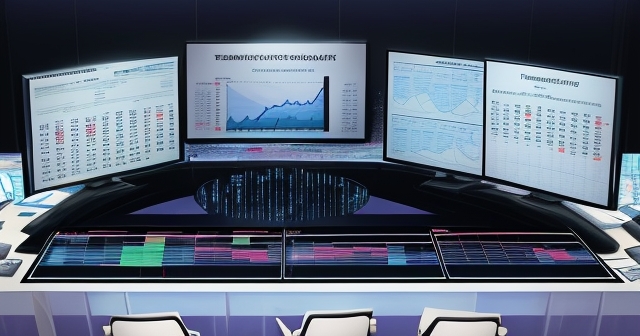
Here are a few important points to consider:
- Understanding market catalysts can result in more strategic trading decisions.
- Filtering news for high-impact events can reduce information overload.
- Market volatility presents both opportunities and risks that traders must navigate.
Why News Events Are Market Catalysts
At its core, the price of any currency pair reflects the market’s collective assessment of the economic health and future prospects of the two countries involved. When a major piece of news is released, it often provides new information that fundamentally changes this assessment. For example, if a country’s central bank unexpectedly raises interest rates, it signals a potentially stronger economy and makes holding that currency more attractive to international investors seeking higher yields. This increased demand can lead to the currency appreciating against others.
The real power of news, however, lies in its ability to generate volatility. Volatility is simply the rate at which the price of a currency pair changes. During periods of low volatility, prices might drift sideways or move in predictable, slow trends. But when high-impact news hits, expectations clash, large institutions react quickly, and orders flood the market. This surge in activity causes prices to swing dramatically, sometimes moving dozens or even hundreds of pips in a matter of minutes. For traders, this explosion of volatility can present significant opportunities for quick profits, but it also comes with amplified risks, as price movements can be sharp and unpredictable.

Consider it like tossing a large stone into a calm pond. The stone represents the news event. The initial splash and ripples are the immediate price reaction – fast, forceful, and spreading outwards. The subsequent waves represent the sustained price action and market adjustments that follow as traders digest the news and position themselves accordingly. Understanding the potential size of the ‘stone’ (the news impact) and the initial reaction (‘the splash’) is key to news trading.
Identifying the Most Impactful News: Not All Headlines are Created Equal
With the constant flow of global information, how do we discern which news warrants our attention and which can be largely ignored? The key is to focus on events that directly influence the fundamental drivers of currency value: economic performance, inflation, employment, and monetary policy. These are the pillars upon which central banks and governments make decisions that impact money supply and interest rates – factors with profound effects on currency valuation.
We can categorize the most impactful news into a few key areas:
- Central Bank Monetary Policy Decisions: These are arguably the most significant market movers. Decisions regarding interest rates, quantitative easing (QE) or tightening (QT), and forward guidance on future policy direction directly affect the attractiveness of a currency. An unexpected rate hike, for instance, is almost guaranteed to strengthen a currency, while a rate cut or dovish statement typically weakens it. Press conferences and meeting minutes following these decisions are also critical, as they provide context and hints about future policy paths.
- Major Economic Data Releases: Key economic indicators provide a snapshot of a country’s economic health. Data that deviates significantly from market expectations can trigger substantial currency moves. We’ll delve into specific indicators shortly, but think of figures like Gross Domestic Product (GDP), Consumer Price Index (CPI – inflation), and employment numbers. These tell the market how fast an economy is growing, how much purchasing power money has, and how strong the labor market is.
- Government Fiscal Policy Announcements: While less frequent than monetary policy changes, major government decisions on taxation, spending, or national debt can influence market confidence and a country’s economic outlook. Large stimulus packages or significant austerity measures can have a material impact on a currency’s value.
- Geopolitical Events: Wars, political instability, major elections, trade disputes, pandemics, and natural disasters can introduce significant uncertainty and risk into the market. These events often lead to ‘risk-off’ sentiment, where investors flock to safe-haven currencies like the U.S. Dollar, Japanese Yen, or Swiss Franc, while selling riskier assets and currencies. Conversely, positive geopolitical developments can foster ‘risk-on’ sentiment.
By concentrating our attention on these types of high-impact events, we can filter out the noise and focus on the moments most likely to generate the volatility we seek for news trading.
Spotlight on Key Economic Indicators and Their Impact
Let’s unpack some of the most crucial economic indicators that consistently move the forex market. Understanding what each number represents and why it matters is fundamental to news trading.
- Interest Rate Decisions: As mentioned, these are paramount. The official rate set by a central bank is the base rate at which commercial banks borrow from the central bank. Changes propagate throughout the economy, influencing lending rates and investment flows. Higher rates generally attract foreign capital seeking better returns on bonds and investments, increasing demand for the currency. Lower rates tend to have the opposite effect. The market reacts not just to the rate change itself, but also to the central bank’s accompanying statement and projections, looking for clues about future policy direction.
- Inflation Data (CPI, PCE, PPI): Inflation measures the rate at which the general price level of goods and services is rising. Central banks are often mandated to maintain price stability, typically targeting a specific inflation rate (e.g., 2%). If inflation is rising too quickly, the central bank may raise interest rates to cool the economy. If inflation is too low, they might cut rates or implement stimulus measures. The Consumer Price Index (CPI) is the most common measure, tracking the prices of a basket of consumer goods and services. The Personal Consumption Expenditures (PCE) price index is the U.S. Federal Reserve’s preferred inflation gauge. The Producer Price Index (PPI) measures inflation at the wholesale level. Unexpectedly high inflation data tends to be bullish for a currency (signaling potential rate hikes), while unexpectedly low data can be bearish.
- Employment Data: The strength of the labor market is a key indicator of economic health. Low unemployment, strong job creation, and rising wages suggest a robust economy, which can lead to increased consumer spending and potentially higher inflation, thus supporting tighter monetary policy. High unemployment and weak job growth signal a struggling economy, potentially leading to looser monetary policy. The U.S. Non-Farm Payrolls (NFP) report is arguably the single most watched piece of economic data globally due to its impact on the U.S. dollar and global markets. It measures the number of new jobs created in the U.S. non-farm sector. Other important employment figures include the unemployment rate, average hourly earnings (wage growth), and initial jobless claims.
- Gross Domestic Product (GDP): GDP is the total value of all goods and services produced in a country over a specific period. It’s the broadest measure of economic growth. A strong GDP reading (especially if better than expected) suggests a healthy, expanding economy, which is generally positive for the currency. A weak or negative GDP reading signals contraction or slowdown, which is typically bearish.
- Retail Sales: This indicator measures the total receipts of retail stores. It’s a key gauge of consumer spending, which is a major component of GDP in many economies. Strong retail sales suggest healthy consumer confidence and spending, indicating economic strength, usually bullish for the currency. Weak sales suggest caution or pessimism, which can be bearish.
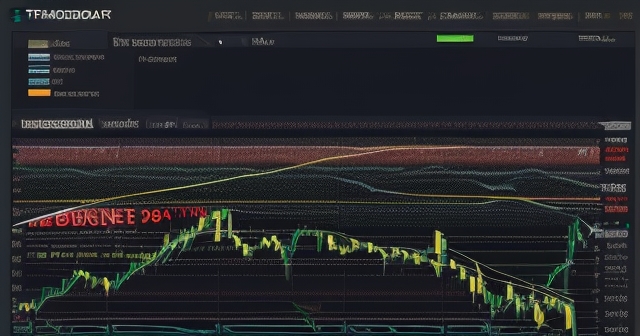
There are many other indicators (Industrial Production, Manufacturing PMIs, Consumer Confidence, Housing Data, Trade Balance, etc.), but the ones listed above are generally considered the most impactful. Remember, it’s often the deviation from market consensus (the expected number) that causes the biggest market reaction, not just the absolute number itself.
The Undeniable Influence of U.S. News and the U.S. Dollar
While economic data from any major country can impact its currency, news originating from the United States holds a unique and often disproportionate influence on the global forex market. Why is this the case?
The primary reason is the U.S. dollar’s status as the world’s primary reserve currency. Central banks around the globe hold significant portions of their foreign exchange reserves in U.S. dollars and U.S. Treasury securities. Furthermore, roughly 90% of all international forex transactions involve the USD. Many global commodities, such as oil and gold, are also priced in U.S. dollars.
This pervasive role means that changes in the value of the U.S. dollar affect economies and financial markets worldwide. Consequently, U.S. economic data releases (like the Non-Farm Payrolls or CPI) and decisions by the Federal Reserve are watched with intense scrutiny by traders and institutions globally. Unexpected U.S. data can trigger large moves not only in USD pairs (like EUR/USD, GBP/USD, USD/JPY) but also ripple across other currency pairs and asset classes.
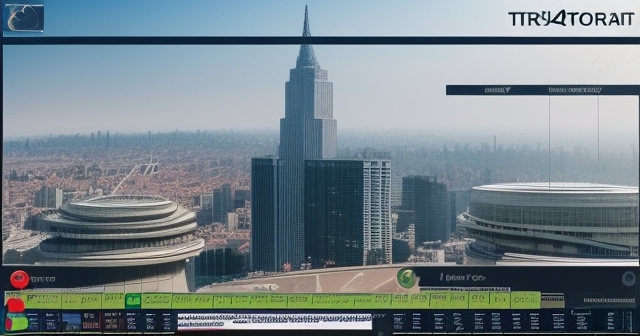
For instance, strong U.S. employment data might cause the USD to strengthen broadly. This strength in the USD can lead to a sell-off in pairs like EUR/USD or AUD/USD, while causing pairs like USD/JPY or USD/CAD to rally. Understanding the interconnectedness of the market and the central role of the U.S. dollar is vital for anyone trading news events.
Therefore, when you’re scanning your economic calendar, pay particular attention to events flagged as high-impact originating from the United States. These are the moments where you are most likely to see significant volatility and potential trading opportunities across a wide range of currency pairs.
Tools and Preparation: The Economic Calendar and Currency Selection
Successfully trading the news isn’t just about knowing *which* events are important; it’s about knowing *when* they are scheduled and being prepared. This is where the economic calendar becomes your indispensable tool.
An economic calendar lists upcoming economic data releases, central bank meetings, speeches by policymakers, and other potentially market-moving events. Most good calendars allow you to filter events by:
- Country/Currency: Focus on the economies whose currencies you trade.
- Impact Level: Calendars typically rate events as low, medium, or high impact. For news trading, we are primarily interested in high-impact events.
- Time Period: View events for the current day, week, or even month ahead.
For each event, the calendar usually provides:
- The name of the event (e.g., Consumer Price Index).
- The country releasing the data.
- The scheduled time of the release.
- The previous period’s reading.
- The market consensus forecast (the average expectation of analysts).
- The actual released number (available instantly at the time of release).
Your preparation involves checking the economic calendar regularly, identifying the upcoming high-impact events, noting their scheduled times, and understanding the market’s consensus expectation. This expectation is crucial because, as we discussed, the market reaction often hinges on how much the actual result differs from the forecast.
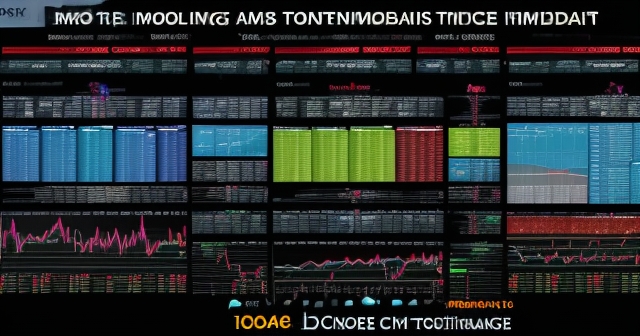
Beyond timing, selecting the right currency pairs is paramount for news trading. Because news releases cause rapid price changes, you need a pair with sufficient liquidity. Liquidity refers to how easily an asset can be bought or sold without significantly impacting its price. Highly liquid markets allow for quick execution of orders with minimal price slippage.
News events tend to cause spreads (the difference between the buy and sell price) to widen dramatically, sometimes instantaneously. Trading low-liquidity pairs during such times can result in massive slippage, executing your trade at a far worse price than you intended. This is why major currency pairs (EUR/USD, GBP/USD, USD/JPY, USD/CHF, USD/CAD, AUD/USD, NZD/USD) are generally preferred for news trading. They have the deepest liquidity and, while spreads will still widen during news, it’s usually less severe and momentary compared to exotic pairs.
If you’re considering beginning your journey into forex trading or looking to expand your trading instruments, understanding the importance of platform features like high-speed execution and tight spreads is key, particularly for volatile strategies like news trading.
Navigating the Volatility: Strategies and Challenges of News Trading
Approaching the market around high-impact news releases requires a different mindset and potentially different strategies than trend following or range trading in quieter conditions. The sudden surge in volatility presents both opportunity and significant risk.
One common approach, particularly for those starting out, might be to observe the immediate reaction without trading the initial spike. The first few seconds and minutes after a major release can be chaotic, with automated trading systems reacting instantly and potentially triggering false moves or “fakeouts.” Some traders prefer to wait for the initial dust to settle and see if a clear direction emerges and is sustained.
A more active strategy involves attempting to trade the breakout that often occurs around news. Leading up to a major news release, price action might enter a period of consolidation, trading within a tight range as the market awaits the catalyst. Traders might place buy stop orders just above the consolidation range and sell stop orders just below it. The idea is that the news release will cause a sharp move in one direction, triggering one of the stop orders and capturing the subsequent momentum.
However, this breakout strategy comes with significant challenges:
- False Breakouts (Fakeouts): Price might initially spike sharply in one direction, trigger stop orders, and then quickly reverse course, stopping out traders on the wrong side of the move.
- Slippage: Due to extreme volatility and widening spreads, your stop order might not be filled at the desired price, leading to significant slippage and a larger loss than anticipated if the market turns against you.
- Whipsaws: The price might swing wildly back and forth, creating ‘whipsaw’ action that stops out traders on both sides of the market.
- Momentum Failure: The initial strong move might lack follow-through momentum, leaving you in a trade that quickly stalls or reverses.
Because of these challenges, news trading is generally considered an advanced strategy, best attempted with robust risk management, fast execution capability, and potentially access to ultra-low latency news feeds (though these are often costly and utilized by institutional traders). It requires discipline to stick to your plan and avoid emotional decisions in the face of rapid price swings.
The Importance of Understanding Market Expectations (Consensus)
As we touched upon earlier, the market’s reaction to an economic data release isn’t solely about whether the number is ‘good’ or ‘bad’ in an absolute sense. It’s about how the actual number compares to what the market was expecting – the consensus forecast. Think of it like reporting on a company’s earnings. If a company reports a profit, that’s good, but if analysts were expecting a much higher profit, the stock might still fall because it didn’t meet expectations.
Similarly, if a country’s GDP grew by 0.5%, that sounds positive. But if the market consensus was for 1.0% growth, the 0.5% figure might be interpreted negatively, leading to a sell-off in the currency. Conversely, a seemingly modest growth figure might trigger a strong rally if the market was bracing for a negative number.
The consensus figure is usually derived from a survey of economists and analysts. It represents the collective wisdom (or sometimes, the collective uncertainty) of the market participants. Economic calendars provide this consensus figure alongside the previous and actual results. By comparing the actual result to the consensus, you can gauge the magnitude of the ‘surprise’ factor, which is often the primary driver of the immediate volatility.
A significant deviation from consensus, whether positive or negative, is what generates the biggest market reaction. Large positive surprises are typically bullish for the currency, while large negative surprises are bearish. Small deviations might cause some minor fluctuations but are less likely to trigger sustained, high-impact moves.
Beyond the Numbers: The Role of Context and Sentiment
While the hard numbers of economic data releases are critical, successful news trading also requires understanding the broader economic context and prevailing market sentiment. A seemingly positive data point might have less impact if the central bank has already signaled that they plan to ignore such data due to other concerns (e.g., global recession fears). Conversely, a moderately positive number might cause a huge rally if the market was extremely pessimistic beforehand.
Consider the current phase of the economic cycle. Is the central bank in a tightening cycle (raising rates) or an easing cycle (cutting rates)? Data releases will be interpreted through the lens of how they might influence the central bank’s next move. For instance, during a tightening cycle, strong inflation or employment data will reinforce expectations of further rate hikes, likely strengthening the currency. During an easing cycle, weak data will reinforce expectations of cuts, weakening the currency.
Market sentiment also plays a role. Are traders feeling ‘risk-on’ (optimistic, willing to invest in riskier assets) or ‘risk-off’ (pessimistic, seeking safety in traditional safe havens)? Geopolitical events, major corporate news, or even significant moves in other asset classes like the stock market can influence this sentiment. If a major economic release coincides with a strong risk-off wave, the currency that the news relates to might struggle to rally even on positive data, as traders prioritize safety over potential yield.
Accessing timely and accurate news is also crucial. Institutional traders often subscribe to services that provide news feeds directly into their trading platforms microseconds before the public release. While this level of speed is usually unattainable for retail traders, having a reliable news source integrated into your platform or readily accessible alongside your charts is essential. Many reputable brokers provide access to news feeds directly within their trading platforms like MT4, MT5, or their proprietary solutions.
When choosing a trading platform, the ability to access relevant news and analysis alongside powerful charting and execution tools is invaluable. Platforms like MT4, MT5, and Pro Trader offered by brokers like Moneta Markets provide integrated news feeds and research tools that can help you stay informed about market-moving events as they happen.
Risk Management: Non-Negotiable for News Trading
If news trading offers the potential for rapid profits, it also carries the risk of rapid and substantial losses. The extreme volatility means that prices can move against your position very quickly, potentially wiping out your trading capital if not managed properly. Therefore, rigorous risk management is not just recommended for news trading; it is absolutely mandatory.
Here are key risk management principles for trading around news:
- Use Stop-Loss Orders: Always, always, always place a stop-loss order when trading news. A stop-loss order automatically closes your trade if the price moves against you by a specified amount, limiting your potential loss. However, be aware of slippage. During high volatility, your stop-loss order might not be executed at the exact price you set, but rather at the next available price, which could be significantly worse.
- Understand Position Sizing: Do not over-leverage your trades, especially around news. Trade with smaller position sizes than you might normally use in calmer market conditions. This means risking a smaller percentage of your total trading capital on any single trade. If you typically risk 1-2% of your account per trade, you might consider reducing that to 0.5% or even less for high-impact news events.
- Account for Wider Spreads: Remember that spreads will widen significantly around news releases. This increases the cost of the trade and can affect your entry and exit prices. Factor this into your potential profit targets and stop-loss placements. A target might need to be wider to justify the cost, and a stop-loss needs to be wide enough to avoid being prematurely triggered by the initial volatility spike, but not so wide that a loss would be catastrophic.
- Consider Waiting for Confirmation: As mentioned before, you don’t have to trade the immediate moments after a release. Waiting for the initial volatility to subside and for a clearer directional move to establish itself can sometimes reduce the risk of being caught in fakeouts or whipsaws, though it might mean missing the very first, rapid price swing.
- Know When NOT to Trade: Sometimes, the smartest decision is to stay out of the market altogether during certain high-impact releases, especially if you are a beginner or unsure of the potential outcome and market reaction. There will always be other trading opportunities.
Treat news trading with immense respect for its power and potential to cause rapid losses. Proper risk management is your shield in this volatile environment.
Beyond the Release: The Duration and Nuance of News Impact
While the most dramatic price action often occurs in the immediate minutes following a high-impact news release, the impact of major news can extend far beyond that initial burst of volatility. The market doesn’t simply react and then forget. Traders and analysts spend hours and days dissecting the data, listening to subsequent speeches from policymakers, and assessing the implications for future economic conditions and central bank policy.
Consider a central bank interest rate decision. The immediate reaction to the announcement and the accompanying statement is crucial. However, the market will then analyze the minutes of the meeting (released later), listen to press conferences by the central bank governor, and read reports from financial institutions about the potential impact on the economy. These follow-up analyses and communications can reinforce or modify the initial market reaction, leading to sustained trends or further volatility.
Major economic data points, like Non-Farm Payrolls or CPI, are also subject to prolonged analysis. Traders will look at sub-components of the data, compare it to other related indicators released earlier in the week, and assess how it fits into the overall economic narrative. A strong NFP report might lead to continued USD strength throughout the day and even into the next week, particularly if it solidifies expectations of future rate hikes.
Geopolitical events, such as trade disputes or political elections, can have impacts that last for weeks, months, or even years, creating ongoing uncertainty and influencing currency valuations based on perceived risk and economic implications. The negotiation process for trade deals or the political landscape after an election can continue to generate headlines that move the market long after the initial event.
This means that successful news trading isn’t just about being present at the moment of release; it also involves understanding the potential for follow-through and recognizing how news flows continue to influence sentiment and price action over a longer timeframe. Staying informed about the ongoing analysis and commentary surrounding major news events is part of maintaining an edge.
Putting It Together: A Conceptual Forex News Trade Example
Let’s walk through a conceptual example of how a news trading scenario might unfold, focusing on the process rather than predicting the exact price move. Imagine it’s the first Friday of the month, and the U.S. Non-Farm Payrolls (NFP) report is scheduled for release at 8:30 AM Eastern Time.
Preparation:
- You check your economic calendar and see NFP is a high-impact event for the USD.
- You note the time (8:30 AM ET).
- You look up the previous NFP reading (e.g., +250,000 jobs) and the market consensus forecast for the upcoming release (e.g., +200,000 jobs). You also note the expected unemployment rate (e.g., 3.6%) and average hourly earnings (e.g., +0.4% month-over-month).
- You decide to focus on the EUR/USD pair, a major pair with high liquidity.
- You analyze the price chart in the hours leading up to the release. You might observe that EUR/USD has been trading in a relatively tight range, consolidating as traders await the data. This consolidation forms a potential range with defined support and resistance levels.
- You consider your risk management plan: you will use a small position size and place stop-loss orders. Given the potential for volatility, you might decide to wait for the initial spike and then look for a sustained move, or perhaps attempt a breakout strategy using stop orders placed just outside the pre-news range.
The Release Moment (8:30 AM ET):
- The actual NFP number is released: +300,000 jobs. The unemployment rate falls to 3.5%, and average hourly earnings are +0.5% MoM.
- This data is significantly better than the market consensus (+200,000 jobs, 3.6%, +0.4%). It indicates a much stronger U.S. labor market than expected.
- Initial Reaction: The market interprets this as bullish for the USD (signaling a stronger economy and potential for the Fed to continue or accelerate interest rate hikes). EUR/USD, which represents EUR strength against USD strength, experiences a sharp sell-off as the USD strengthens. Prices might drop rapidly, potentially breaking below the pre-news consolidation range.
Potential Trading Scenarios (Conceptual):
- Breakout Trade: If you had placed a sell stop order below the consolidation range, it would likely be triggered by the sharp move down. Your challenge now is managing the trade amidst volatility and deciding where to place your stop-loss (perhaps above the broken consolidation low) and profit target. Be wary of immediate reversals.
- Wait and See: You wait for the initial chaos to subside (e.g., 5-10 minutes). You observe that the sell-off is continuing with strong downward momentum, and the price is holding below the key pre-news level. You might then look for a potential entry on a pullback or a continuation of the downward trend, with a stop-loss placed above a recent high.
- Fade the Move (Higher Risk): If the initial move seems excessively large or hits a major technical support level very quickly, some experienced traders might attempt to ‘fade’ the move, expecting a temporary correction or reversal. This is highly risky and not recommended for beginners.
Post-Release Analysis:
- You monitor how the price reacts in the minutes and hours following the release. Does the selling pressure continue? Does the price bounce back?
- You read analysis from financial news outlets and analysts interpreting the data and its implications for Fed policy. This helps you understand whether the market’s initial reaction is likely to be sustained.
- You keep your stop-loss in place and adjust your trade management based on how the price action develops.
This example highlights the importance of preparation, observing the reaction relative to consensus, and having a plan for managing the trade during and after the release. It also underscores the unpredictable nature of the immediate reaction and the need for stringent risk controls.
Choosing Your Broker: Features That Matter for News Trading
Given the unique demands of news trading – requiring fast execution, potentially large price swings, and the crucial need for reliable information – the choice of your forex broker becomes particularly important. Not all brokers are equally well-equipped to handle the specific conditions around high-impact news events.
When evaluating brokers for news trading, consider these features:
- Execution Speed: In a market that can move dozens of pips in seconds, the speed at which your orders are processed is critical. Look for brokers with robust infrastructure and fast execution times to minimize slippage.
- Spread Management: While spreads will widen on all brokers during news, some may have tighter average spreads to begin with or less drastic widening. Compare typical spreads on major pairs during both normal and volatile conditions if possible.
- Platform Stability and Tools: You need a stable trading platform that won’t freeze or lag during peak volatility. Integrated news feeds, economic calendars, and reliable charting tools are also essential. Popular platforms like MT4, MT5, and sophisticated alternatives like Pro Trader are often preferred for their features and reliability.
- Liquidity Providers: Brokers with access to deep liquidity pools from multiple top-tier banks can offer better pricing and execution, especially during volatile times.
- Regulation and Trust: Given the high stakes, trading with a well-regulated broker is non-negotiable. Regulatory oversight ensures brokers adhere to strict standards regarding capital adequacy, client fund segregation, and fair practices. Look for regulation from reputable bodies like the FCA (UK), ASIC (Australia), CySEC (Cyprus), or equivalent authorities in other major financial centers.
- Customer Support: Having responsive customer support is important, especially if you encounter any technical issues during a critical news event.
If you are evaluating options for your trading needs, particularly if you’re interested in trading a variety of instruments including forex, looking into platforms that offer a combination of strong regulation, diverse instruments, and powerful trading technology is a good step. Moneta Markets is an example of a broker offering access to over 1000 instruments and supporting platforms like MT4, MT5, and Pro Trader, along with multi-jurisdictional regulation (like FSCA, ASIC, FSA) and features such as segregated client funds and 24/7 support, which many traders find beneficial.
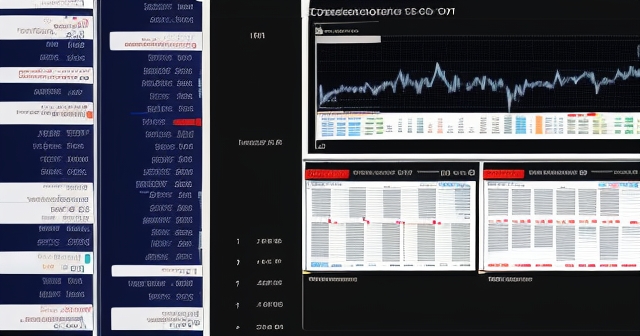
The right broker can provide the technical environment necessary to implement your news trading strategies effectively, complementing your knowledge and risk management efforts.
Conclusion: Mastering the Art and Science of Forex News Trading
Trading the news in the forex market is a high-stakes, high-reward endeavor that is not for the faint of heart. It requires a blend of diligent preparation, swift execution, robust risk management, and a deep understanding of how macroeconomic events translate into currency movements. We’ve explored why news matters, identified the key catalysts like central bank decisions and major economic data (especially from the U.S.), highlighted the crucial role of the economic calendar and liquid currency pairs, discussed strategies and their inherent challenges, and emphasized the absolute necessity of rigorous risk management.
News trading offers the potential to capitalize on the most volatile moments in the market, but it demands respect. Prices can move with astonishing speed, and unexpected outcomes or ‘fakeouts’ can lead to rapid losses. It’s a strategy that often requires significant practice, perhaps initially on a demo account, to become comfortable with the pace and nature of price action around major releases.
Ultimately, mastering news trading involves more than just knowing the schedule of releases. It requires understanding the economic context, anticipating potential market reactions based on consensus expectations, and being disciplined enough to execute your trading plan and manage risk effectively when volatility explodes. By combining solid foundational knowledge with practical experience and sound risk practices, you can begin to navigate the exciting, albeit challenging, world of trading the news in the forex market.
forex trade exampleFAQ
Q:What are the key factors to consider when trading news in the forex market?
A:Key factors include understanding market catalysts, filtering high-impact news, timing trades, and implementing robust risk management strategies.
Q:How does U.S. economic data influence global forex markets?
A:The U.S. dollar is the primary reserve currency, and its economic data can trigger significant volatility not only in USD pairs but also in global markets.
Q:What is the importance of the economic calendar for traders?
A:The economic calendar helps traders track upcoming economic releases and events, allowing them to prepare for potential market-moving news.
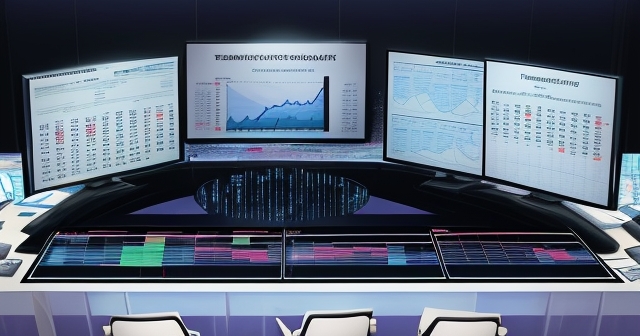
留言